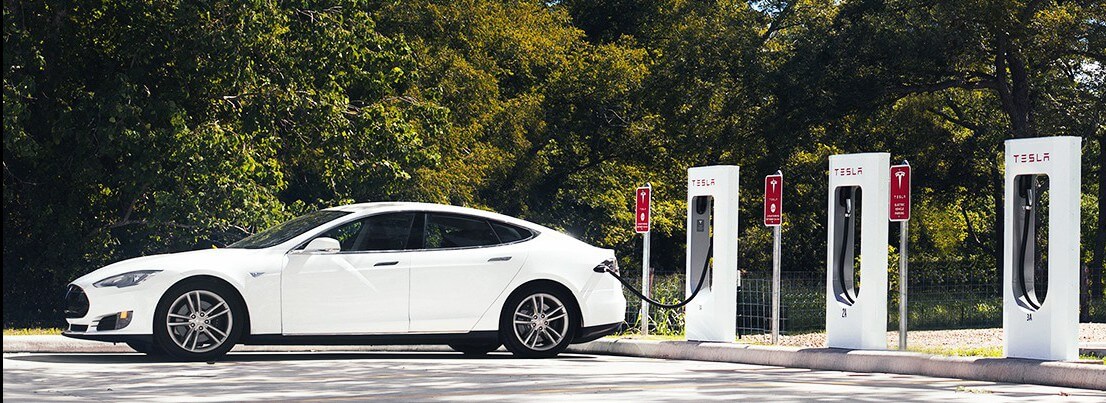
Functioning transportation systems are fundamental to modern, prosperous societies. They provide a means to get to work, connect us to friends and family, and catalyze economic activity. But transportation today comes with a cost. It produces approximately 18 percent of human-related greenhouse gas (GHG) emissions and local air pollution that contributes to health problems for millions.
This article also appears in the June 2016 issue of Alliance Magazine.
To ensure a safer, more prosperous future, transport emissions need to be reduced significantly by mid-century. Reaching this goal requires a comprehensive set of strategies. These include equipping cities with increased transit, biking and walking options and more efficient cars, trucks, planes and ships that use increasingly lower-carbon sources of energy.
‘Fortunately, an electric-drive vehicle revolution is under way that has the potential to end over 100 years of dominance by oil-powered vehicles.’
Fortunately, an electric-drive vehicle (EDV) revolution is under way that has the potential to end over 100 years of dominance by oil-powered vehicles. Governments including California, China, India, the Netherlands and Norway are leading full-scale shifts to EDVs including plug-in hybrid, battery and fuel-cell vehicles. Consumer demand is on the rise, and manufacturers like GM, Nissan, Tesla and others are starting to bring affordable EDVs to market.
These developments are welcome and necessary. According to the International Energy Agency, EDVs should account for at least 75 percent of car sales by 2050. Such a transition will also produce economic benefits by contributing trillions of dollars in fuel savings for consumers.
Increasing the adoption of EDVs consistent with international climate goals, however, requires overcoming four early-market challenges: cost, convenience, consumer awareness and lasting commitment by governments and industry. Fortunately, solutions to these early challenges exist in the form of improved incentives, infrastructure and information.
- Incentives: Well-designed regulatory instruments like fuel economy, GHG and zero-emission policies for car makers and fuel providers; and other incentives like low-emission zones for cities and parking privileges.
- Infrastructure: Support for planning and implementation of public fuelling stations and building codes that are EDV-friendly. Support for integration of vehicles with renewable energy including public-private partnerships and planning across governments, industry and utilities.
- Information: Credible information for consumers, businesses and policymakers about the benefits of EDVs and the most effective ways to shift the market.
Philanthropy and philanthropic institutions are uniquely positioned to help with the shift to EDVs. As a global organization, the ClimateWorks Foundation works with foundation partners and grantees in key markets. We develop and implement strategies, evaluate investment opportunities, support diverse coalitions, share policy lessons across regions, and help to mobilize and inform citizens and key stakeholders. The global nature of automobile and supplier markets makes a global strategy particularly powerful.
There are several recent examples of philanthropically supported activities on EDVs. The International Zero-Emission Vehicle (ZEV) Alliance is a collaboration of 14 members comprising countries, states and provinces sharing the goal of 100 per cent zero emissions on passenger vehicle sales by 2050. The China-US Zero-Emission Vehicle Policy Lab is another example established to conduct joint policy research, share best practice and explore policy collaboration and implementation across two of the largest EDV markets. The Platform for Electro-Mobility unites businesses and stakeholders from the road, rail and electricity supply sectors in Europe with civil society and cities to promote the benefits of sustainable electrification of transport. Finally, the Charge Ahead Coalition in California aims to put a million electric cars, trucks and buses on the road within 10 years.
‘Transitioning to a sustainable transportation system requires transforming one of the largest industrial sectors in the world. Philanthropy will need to be at the heart of these efforts to maximize the social benefits and likelihood of success.’
Looking ahead, transitioning to a sustainable transportation system requires transforming one of the largest industrial sectors in the world. Philanthropy will need to be at the heart of these efforts to maximize the social benefits and likelihood of success. Together, we can make significant investments to support transportation that is clean, affordable, accessible, and consistent with the world’s climate goals. We look forward to collaborating with other foundations and partners to accelerate this work and the world’s response to the climate crisis.


